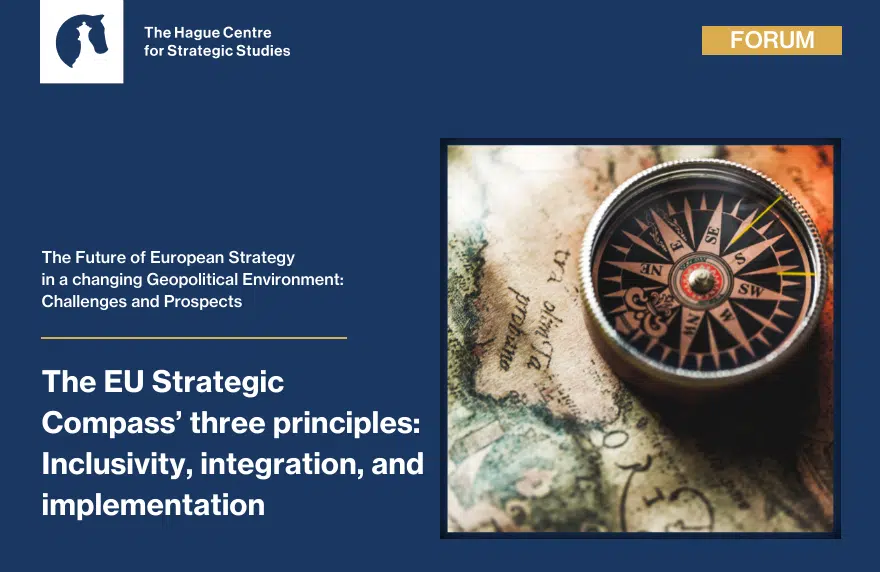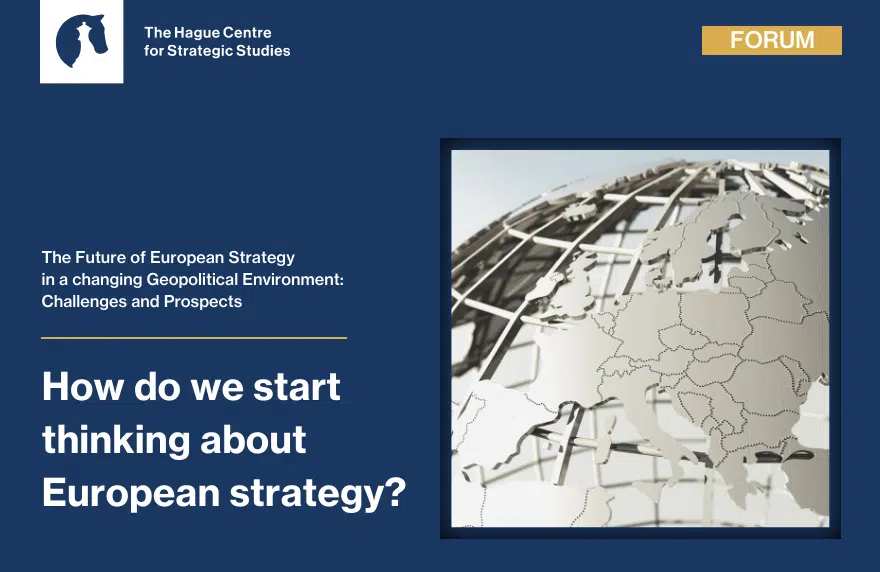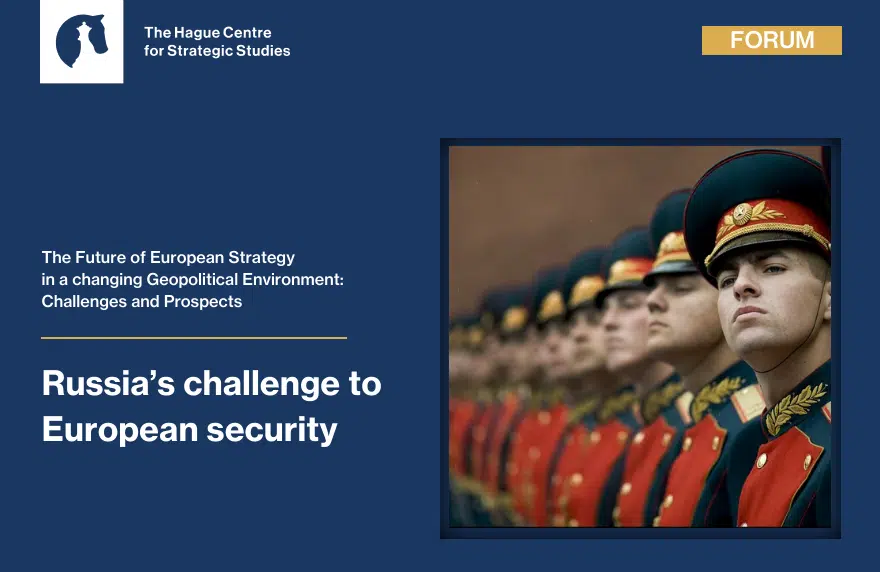Research
Since the European Council’s summit in December 2013, the improvement of the EU’s ability to act collectively in the realm of security and defence has been higher on the political agenda. Successive geopolitical crises such as the annexation of Crimea by Russia or the terrorist attacks in Paris strengthened the sense of urgency. Since 2016, when the European Union’s Global Strategy (EUGS) was published, more progress has been made with respect to EU’s security and defence than in almost 20 years of the existence of the Common Security and Defence Policy. In essence, this progress included the launch of various initiatives like Permanent Structured Cooperation (PESCO), an instrument for enhanced cooperation between the Member States and the European Defence Fund initiated by the European Commission. This momentum in security and defence has been driven by various stakeholders – Member States and EU institutions – and the Union’s “grand strategy”[1] has been perceived by some as an umbrella for the recent initiatives.[2] Yet, the EUGS was developed by the High Representative (HR) Federica Mogherini, whilst the involvement of the Member States was reduced to consultations and their buy-in was correspondingly limited. Mogherini managed to persuade the Foreign Affairs Council (FAC) to adopt the Implementation Plan on Security and Defence (IPSD) that followed the EUGS. But the EUGS itself was never adopted by the Member States. The EUGS was intentionally lean in terms of the operational side of security and defence capabilities, leaving the implementation to subsequent sectoral documents.
The Strategic Compass is expected to rectify some of the deficiencies of the EUGS and it was inaugurated in the fall of 2020 as the flagship project of the German EU Council presidency.[3] As the Union’s key security policy document, the Strategic Compass will “enhance and guide the implementation of the Level of Ambition on security and defence” by defining policy orientations, concrete goals, and the Union’s objectives for the next 5 to 10 years.[4] Unlike in the case of the EUGS, the HR will present the draft of the Strategic Compass to the FAC in November 2021, and it will be subject to discussion by the Member States and possible changes they would like to introduce. The goal is to adopt the final document in March 2022 during the French presidency of the Council.
All of this means that there is a window of opportunity for EU member states to be more active in the security and defence realm. The Strategic Compass might be an important step forward — if all Member States declare their support for it. Against this backdrop, there are three things that should be considered when debating the chances of success for the Strategic Compass: inclusivity, integration, and implementation.
Inclusivity
The Strategic Compass is, unlike the EUGS, driven by the Member States, with Germany and France being in the lead. If, as envisaged, all Member States agree with its provisions and adopt the document at the FAC, it will send a clear signal of unity regarding the desirability of strengthening security and defence cooperation. The Strategic Compass was been initiated by Germany in close cooperation with France. It is not a coincidence that the drafting process of the Strategic Compass extends from the German to the French presidency of the EU Council. The engagement of the two biggest players is not only indispensable but also highly valuable.
At the same time, the fact that France and Germany play such influential roles means that smaller Member States may not be sufficiently involved in the drafting process or able to pitch their ideas. Consider the joint threat analysis. It introduces a broad range of risks and challenges that determine the EU’s security environment, even as threat perceptions of individual Member States differ considerably.[5] Hence, the EU must prioritize the most urgent threats since the EU does not have the resources to tackle every conflict around the globe. To that end, the EU must convince 27 Member States, each with their own concerns, to agree on selected priorities. This constitutes a thorny test for the inclusiveness of the Strategic Compass. There are also other divisive issues among the EU countries, such as the attitude towards the introduction of Qualified Majority Voting in security and defence, or the relationship with NATO with regard to which a discussion about the division of labour between it and the EU in realm of security will be vital. If the Strategic Compass is to signal unity, all Member States must stand behind it — not only the big and powerful ones.
Integration
Equally important is that in order to enhance the EU’s ability to act as a security provider, the Strategic Compass must be integrated into individual Member States’ defence processes and strategies.[6] Of course, embedding joint EU arrangements at the national level is an incremental process that will take time. However, this is the only way the overarching vision that guides the idea of the Strategic Compass — bringing together strategic cultures of the Member States — can be realized. The gradual convergence of strategic cultures depends on the political will of each Member State. This, in turn, depends on the alignment of security interests of individual countries with those put forward by the Strategic Compass. Therefore, the challenge is to get all Member States to agree with priorities, mid-term goals and instruments introduced by the document. At the same time, the Strategic Compass should also serve as a link for the variety of tools and capabilities that already function at the EU level. To become the key document on the Union’s security and defence, it should provide an institutional structure for the security architecture by linking and forming existing instruments into a coherent whole. In this manner, the Strategic Compass would, by its overarching character, put an end to the existing cacophony of multiple strategic documents that limit the role of the Union as a geopolitical player.
Implementation
A closely related issue is that the usefulness of this document will be judged by its implementation, which will occur during difficult times and most probably coincide with the end of the pandemic. The adoption of the Strategic Compass will mark the beginning of a process whereby the EU learns to speak the language of power. The Member States will be preoccupied with fighting the severe economic and social repercussions of the coronavirus outbreak and global security concerns will most probably play a secondary role on their agendas. Thus, a strong commitment to carrying out the arrangements of the Strategic Compass is needed, both at the level of heads of states in the European Council and on the operational level of the FAC. The recurrence of the EU’s well-known tendency to create concepts not supported by concrete actions represents a risk that needs to be addressed by all the stakeholders engaged in the drafting of the Strategic Compass. One way to increase the chances of implementing the provisions of the Strategic Compass is to allow for greater differentiation in the EU’s security and defence by promoting solutions such as constructive abstention from specific policies, lead groups, or coalitions of the willing.[7] The flexibility afforded by such mechanisms would help reconcile other principles crucial to the Strategic Compass, like inclusivity, with the ambitious goals the Strategic Compass is expected to set. Yet, one should keep in mind that the Strategic Compass will not eliminate the existing flaws of EU’s security and defence — flaws such as insufficient military capabilities, the limited willingness of the Member States to provide resources, or inadequate military mobility. What it can do, however, is fill the as yet vague concept of the geopolitical Union with substance by clarifying what kind of security and defence player the EU wants to be and what its priorities for the next decade are.
Dr Monika Sus
Polish Academy of Sciences (Poland) and Hertie School in Berlin (Germany)
[1] Marie Cold-Ravnkilde Signe and Christine Nissen, “Schizophrenic Agendas in the EU’s External Actions in Mali,” International Affairs, 96:4 (2020), https://doi.org/10.1093/ia/iiaa053.
[2] Monika Sus, “Supranational Entrepreneurs: The High Representative and the EU Global Strategy,” International Affairs, 97:3 (2021), https://doi.org/10.1093/ia/iiab037.
[3] European Union External Action Service, “Memo. Questions and Answers: Threat Analysis – a Background for the Strategic Compass” (20 November 2020), https://eeas.europa.eu/sites/default/files/2020_11_20_memo_questions_and_answers_-_threat_analsysis_-_copy.pdf; European Union External Action Service, “Memo. Questions and Answers: Crisis Management basket – a Background for the Strategic Compass” (5 May 2021), https://eeas.europa.eu/sites/default/files/2021_05_05_strategic_compass_-_crisis_management_basket_media_final.pdf.
[4] Council of the European Union, “Council Conclusions on Security and Defence” (10 May 2021), https://www.consilium.europa.eu/media/49527/st08396-en21.pdf.
[5] Hugo Meijer and Stephen G Brooks, “Illusions of Autonomy,” International Security, 45:4 (2021).
[6] European Union Institute for Security Studies, “Making the Strategic Compass work: How to embed EU ambitions in national defence planning?” (European Union Institute for Security Studies and Ministry of Defence of Republic of Croatia, n.d. 2021), https://www.iss.europa.eu/sites/default/files/EUISSFiles/Strategic%20Compass%20and%20National%20Defence%20Planning%20-%20Final%20Report.pdf.
[7] For example: Giovanni Grevi et al., “Differentiated Cooperation in European Foreign Policy: The Challenge of Coherence,” EU IDEA Policy Papers, Policy Paper 5 (2020); Steven Blockmans, “Differentiation in CFSP: Potential and Limits,” Istituto Affari Internazionali, Paper (2017), https://www.iai.it/sites/default/files/eu60_5.pdf.






